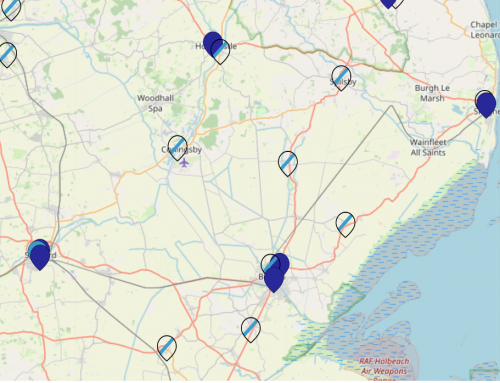 The Selective School Expansion Fund (SSEF) offered two bidding rounds in 2018 and 2019 with £64 million invested in the expansion of grammar schools. The money was given on the condition these schools increased access for disadvantaged pupils, however Comprehensive Future’s new research, as revealed in Schools Week, shows that the 22 schools receiving funding have done little to improve access for disadvantaged pupils. CF’s new interactive map of grammar schools reveals the gaps in the intake of Free School Meals pupils compared to surrounding schools. The new data also shows that four of the schools winning funding educate extremely high proportions of affluent pupils, admitting more than one in five pupils from fee-paying ‘prep’ schools.
The Selective School Expansion Fund (SSEF) offered two bidding rounds in 2018 and 2019 with £64 million invested in the expansion of grammar schools. The money was given on the condition these schools increased access for disadvantaged pupils, however Comprehensive Future’s new research, as revealed in Schools Week, shows that the 22 schools receiving funding have done little to improve access for disadvantaged pupils. CF’s new interactive map of grammar schools reveals the gaps in the intake of Free School Meals pupils compared to surrounding schools. The new data also shows that four of the schools winning funding educate extremely high proportions of affluent pupils, admitting more than one in five pupils from fee-paying ‘prep’ schools.
CF’s Chair, Dr Nuala Burgess said, “The Selective School Expansion Fund was a fundamentally flawed idea. Giving cash to grammar schools with notoriously low rates of FSM pupils on a promise that they would increase their numbers of disadvantaged pupils was never going to work. Figures obtained by Comprehensive Future show the schools who benefited from the fund have made no significant improvements on their intake of disadvantaged children – exactly as we predicted. The real scandal is that there was never any requirement on the schools to be accountable for the money they received. As a result, they have successfully expanded while failing to become more inclusive. Public funds should never have been used to expand these schools.
“Our research shows that the 22 grammar schools who benefited from the Selective School Expansion Fund are far more likely to admit a pupil who previously attended a fee-paying ‘prep’ school than a child from a disadvantaged background. The majority of these schools admit between 10 – 24% of pupils from private schools and average just 5% of pupils on free school meals. On top of that, some 34% of their pupils travel to and from school every day from outside the local authority area. This is hardly the profile of your typical secondary school.
“When you think how much money was given to grammar schools on the condition of widening their access, these figures are shocking. The amount of progress they have made towards becoming more inclusive is shameful. In spite of all the incentives they have been given, grammar schools remain dominated by children from more advantaged families.”
Schools Week wrote about the SSEF schools, with an article here. The statistics for privately educated pupils*, out of area pupils, and Free School Meals pupils, at each of the expanding schools can be found below.
| Grammar schools awarded SSEF expansion cash | % of pupils transferring from private primary education* | % of out of Local Authority area pupils | % of FSM pupils |
| Chelmsford County High School for Girls | 23.9 | 15.1 | 2.4 |
| Altrincham Grammar school for Boys | 23.3 | 15.6 | 1.6 |
| Colchester County High School for Girls | 22.4 | 19.7 | 2.7 |
| Altrincham Grammar School for Girls | 22 | 24 | 2.7 |
| Bournemouth School | 17.6 | 9 | 6 |
| Haberdasher Adams’ School | 17.3 | 60.3 | 2.6 |
| Sir Thomas Rich’s school | 16.2 | 16.8 | 4.4 |
| Sir William Borlase’s Grammar school | 15.3 | 28.9 | 2.3 |
| Bournemouth School for Girls | 15.3 | 15.8 | 4.8 |
| Colyton Grammar School | 13.8 | 18.3 | 4.9 |
| Newport Girls’ High School Academy | 13.8 | 40.7 | 2.8 |
| The Rochester Grammar School | 12.4 | 36.3 | 4.6 |
| Wolverhampton Girls’ High School | 11.6 | 47.4 | 8.8 |
| Kendrick School | 11.5 | 69.9 | 2.7 |
| John Hampden Grammar School | 11 | 31.6 | 3.1 |
| King Edward VI Handsworth School | 10.5 | 34.5 | 13.3 |
| Queen Mary’s Grammar School | 10 | 54 | 11.1 |
| Queen Mary’s High School | 10 | 56.2 | 12.6 |
| Lawrence Sheriff School | 9.8 | 30.6 | 5.6 |
| Ribston Hall High School | 5.1 | 6.8 | 5.1 |
| St Michael’s Catholic Grammar School | 4.4 | 68 | 4.4 |
| Stretford Grammar School | 2.4 | 40.8 | 11 |
* The % of pupils transferring from private primary education refers to pupils not registered at a state primary school before attending each grammar school. Some of these pupils may have been homeschooled or educated abroad, but given the demographics of grammar school entry it is likely most of these pupils were educated in fee-paying schools.





